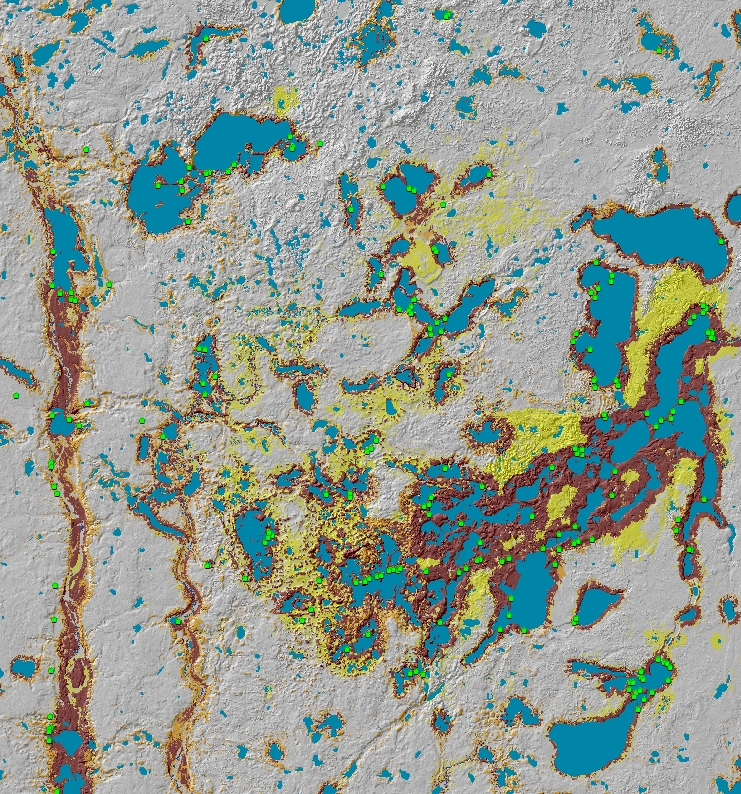Implementation
MnModel has been fully implemented in the Section 106 process by the MnDOT Cultural Resources Unit (CRU). When reviewing FHWA and State-funded highway projects for impacts to archaeological resources, MnModel is consulted to determine where resources are likely to be present.
Implementation Tools
To facilitate the implementation of MnModel, MnDOT developed several successive GIS applications that made it easy for MnDOT users to access the data and models for Section 106 reviews. MnDOT Cultural Resources Unit staff now access data and models via the Cultural Resources Information System (CRIS) application. This application provides a GIS interface through which they can view project areas overlaid on MnModel and other relevant data.

To implement the third dimension of MnModel and improve discovery and preservation of deeply buried archaeological resources, MnDOT developed a field protocol for testing for deeply buried archaeological sites. Development of this protocol involved evaluating a variety of methods for detecting deeply buried sites, recommending best practices for field research, and providing recommendations for evaluating the National Register eligibility of buried archaeological sites.
Data Distribution
When Phase 3 of MnModel was completed, GIS data were not readily available on-line. As a service to Federal and State agencies with archaeologists on staff, MnDOT issued licenses to use MnModel and provided them with the models and ancillary data on CD-ROM. This practice proved unworkable for a variety of reasons, but primarily because it was not possible to monitor adherence to the terms of the license agreements. MnModel is now being made available to professional archaeologists, tribal historic preservation officers, and the Minnesota Council of Indian Affairs via the Office of the State Archaeologist (OSA) web portal. OSA will manage permissions to use the models just as they manage permission to use archaeological site data.
